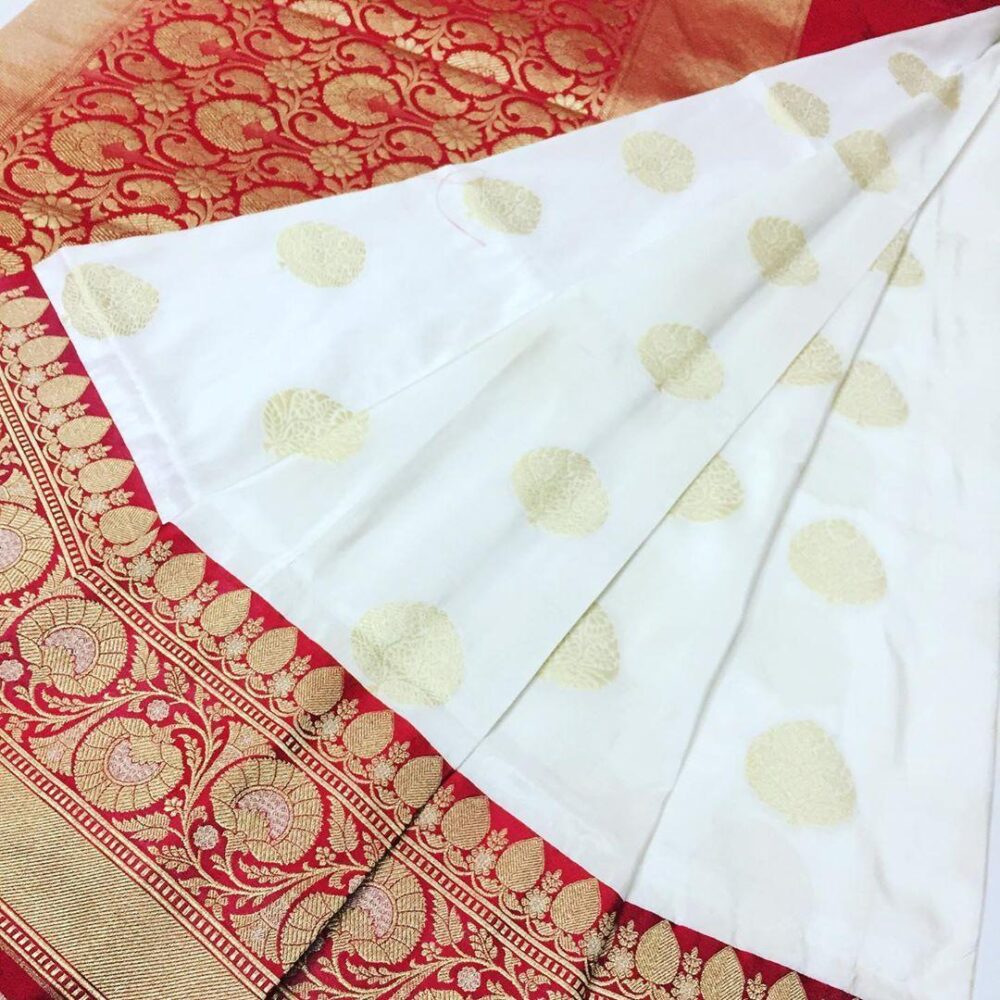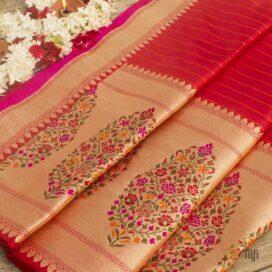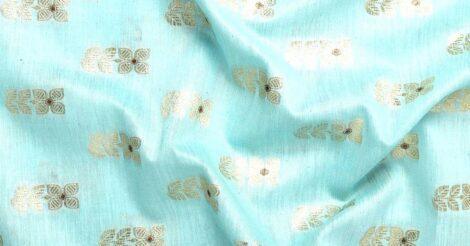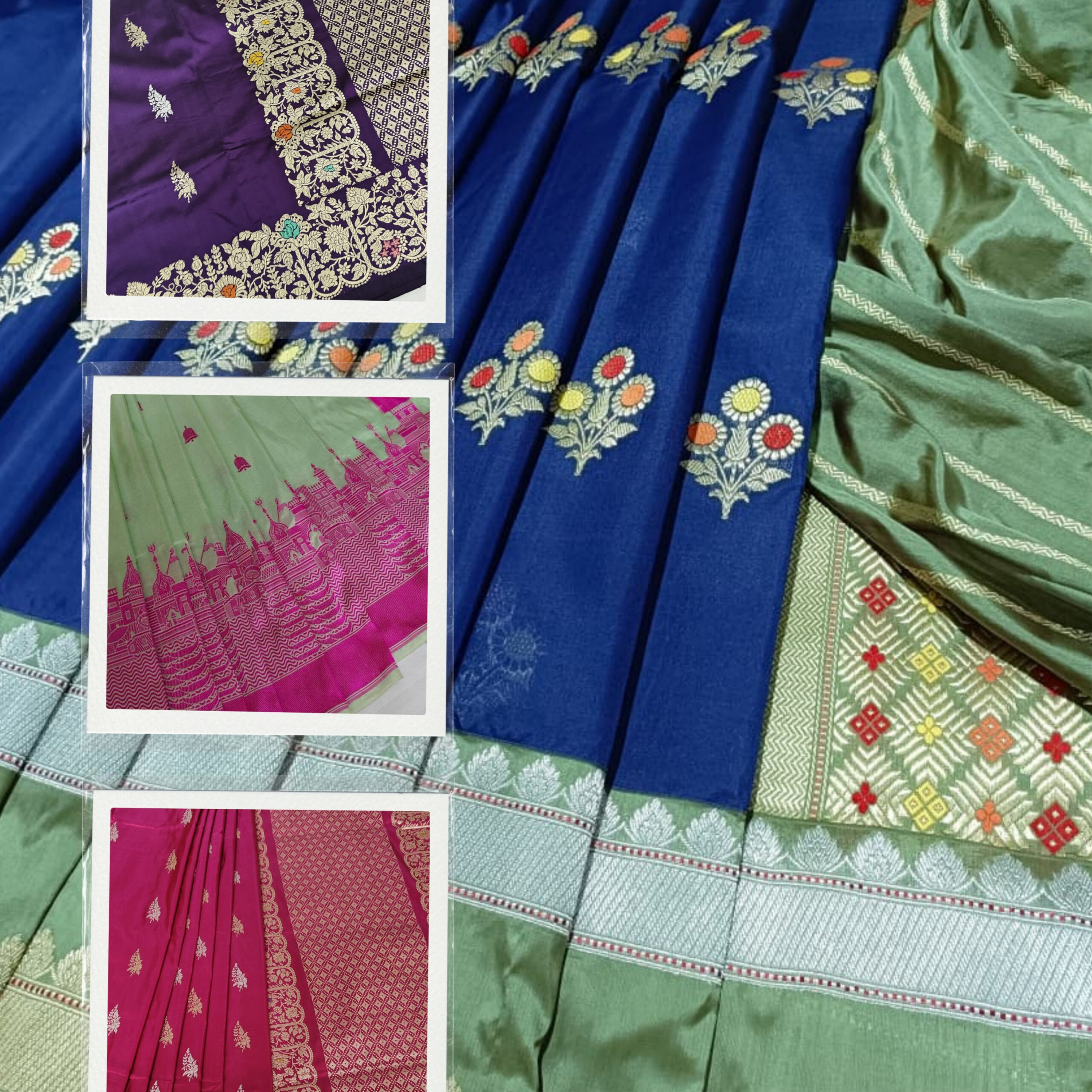- You have no items in your shopping cart
- Subtotal: ₹ 0

STEP 1: GRAPH MAKING:
A graph refers to the detailed design template of a saree, which contains the border design, the design of the buttis and the pallu design. This template is designed by a graphic designer and showcases each design in minute detail to give proper structure and form to the final creation. Each pattern and design once approved at this stage, then goes into production or weaving of the piece.
STEP 2: CARDBOARD/PATTA PREPARATION:
The Patta is like a stencil that is put into the handloom machine to obtain the particular design on the fabric. Based on the graph designed, the cardboard/patta is then cut and punched holes into to create the exact pattern as the graph suggests. This cardboard is then installed into the machine set up. 4 different types of machines are used (40,80,100,120 choks) depending on the design for the weaving process to start.
STEP 3: THANA/SILK THREADS PROCESSING:
Karahi is the process of preparing the silk yarns for the weaving process. In this step, the yarns are selected sent out for the KARAHI, which is the process of polishing and finishing the fabric before it goes into weaving and production. At this stage, the silk yarns are made ready for a minimum of 4-6 sarees.
STEP 4: DYEING:
Once the Thana is ready, the silk yarns are dyed as per the requirements of the design and shades required. Each shade and colour is decided with precision to make every saree beautiful, vibrant and unique.
STEP 5: PREPARING THE BANA:
Bana refers to the tools incorporated in the machinery for weaving. In this step of the saree making process, the bana is crafted to make it suitable for the design of the saree. The warp and weft are prepared as per the saree’s design and detailing.
STEP 6: ZARI SELECTION:
Zari is the golden, antique and rustic thread that adds to the saree’s beauty. Zari makes the saree look heavenly by adding grace and also giving the saree a heavy look. There are 3 types of zaris: Sona, Roopa and Antique Zari which are used in the weaving process. Zari is selected as per the base colour of the fabric. The combination and matching are done to select which zari would look best with the colours in the fabric of the saree. Zari plays a very critical role in deciding the entire look of the saree. Usually copper tested zari is used in most of the sarees; however even real silver and gold zari is also used at times in Banarsi sarees to make it all the more priceless.
STEP 7: SAMPLE PREPARATION:
After all the details are decided and the patterns, designs, colours are finalised, a sample of 2-3 inches is prepared to understand the final output. The sample is very critical in deciding the overall look of the saree and whether it would look good or not. The sample gives a glimpse into the entire final look of the piece. Sample helps correct any mistakes and make any modifications required. Once the sample is approved, the final production for the piece starts.
STEP 8: WEAVING BEGINS:
After getting the approval on the sample design, the actual weaving begins on the handloom. Weaving the first piece of a new design is always a challenge for a weaver. There is the pressure of getting things correct and for the piece to come out as expected. Only a master weaver with years of experience, can get such details right. Pritha crafts proud of its weavers who put in tireless hours and exalt the brand name with their fine work. On an average, it takes hand weavers about 10 hours to weave 1-2 inches of a Banarasi silk saree. This points to the extremely demanding effort that goes into the making of each saree.
STEP 9: FINISHING:
After weaving is completed, the saree is processed for finishing. Any extra threads or loose threads are finished properly to make the piece ready for sale. Generally, silk kadwa sarees do not need any sort of finishing. The cut work sarees are sent out for different levels of finishing such as cutting, calander etc.
STEP 10: FINAL CHECK:
Lastly, the final check of the masterpiece is done in stages for weave, zari, colour etc. to make sure everything is perfect and suitable for putting up for sale.
STEP 11: READY FOR RETAILING:
After the saree passes the final check at the factory, it is packed and sent to the us.
This is the story of a single saree its journey from inception to production to sale. Every saree has a story and a mastermind that goes into its making. Pritha crafts are known for their intricate design, perfect color palettes, and extremely gorgeous and unique overall look. This insight into the making of each saree is sure to compel many of us to buy one such masterpiece and elevate the stature of our wardrobe collection to another level.









